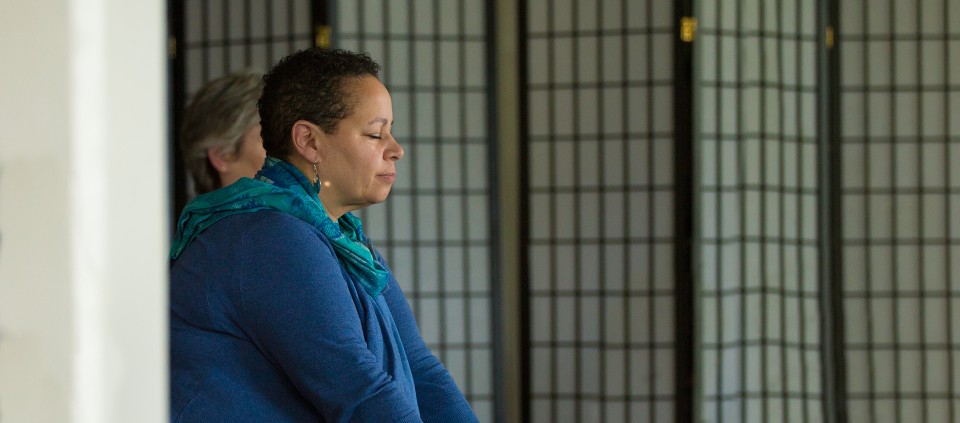It’s Called ‘Practice’ for a Reason

I don’t know what I’d do without a meditation practice.
After 20-plus years, daily meditation is not a huge struggle for me any longer. Yes, sometimes I miss a day of formal practice. I might even go through a period of not sitting for a week (rare). But, I have established enough of a foundation that meditation is one reliable way for me to ground and center myself.
I need a lot of grounding and centering these days. Two years ago this summer, I launched my new professional life as a full-time meditation teacher and transformational coach. One month into that new life, I was diagnosed with Stage Four cancer. I cancelled teaching engagements, clients, and consulting gigs to cope with the shock and grief.
My meditation practice helped me make space in the midst of fear, confusion, and rage. And through the support of many friends (including many of you), I spent the next year healing and slowly building back my work life. Happily, last September I received clear scans.
Then, in October, my mother unexpectedly fell ill in Ethiopia and passed away in London a few weeks later. Since then, I have become the caretaker for my older, intellectually disabled sister, who now lives with my husband and me.
Also, my sister and I were hit by a car.
And I got pneumonia.
Again: I do not know what I would do without a meditation practice!
It’s called “practice” for a reason. I’m not practicing to become a good meditator. I’m practicing so that I can meet life’s difficulties and blessings with the same ease with which I meet my breath and busy mind.
The challenges I have faced these past two years have been intense. I rely on continually cultivating a mind and heart that can allow for all of life: the joys and the sorrows, the challenges and the delights.
You can’t stop the waves, but you can learn to surf.
—Jon Kabat-Zinn
My meditation practice (and its connected wisdom explorations) is a training ground for both the rough waters and the fun waves. I try not to get carried away like a buoy with every sway of the currents. I constantly (re)anchor myself to what is deep, true, and ultimately liberating. Keeping my head above water. Catching a wave when I can. (Good times!)
But although the practice is simple to start (be with this breath, and now this one … repeat), that doesn’t mean it’s easy. The nuance of cultivating the aspiration for freedom but not grasping at every little passing moment that feels freeing is often so frustrating that we give up without really understanding what’s happening.
Meditation is a laboratory for being with the paradox of practice—change comes from acceptance.
I sit down on my cushion with an aspiration for health, well-being, and flourishing, but I must meet the difficulties of life without pushing them away. The key is cultivating an attitude of kindness, curiosity, and ease. Or, as Joseph Goldstein says: It’s not what’s happening that matters, but our relationship to it. The shift in how we meet our lives, the ease and well-being we have regardless what is happening—that’s why we practice. It’s not easy, but it is possible.
May we all catch some waves.
Find out about upcoming programs with Sebene Selassie at Kripalu.
This article was originally published on Sebene’s website.
Sebene Selassie is a dharma teacher and transformational coach.
Full Bio and Programs